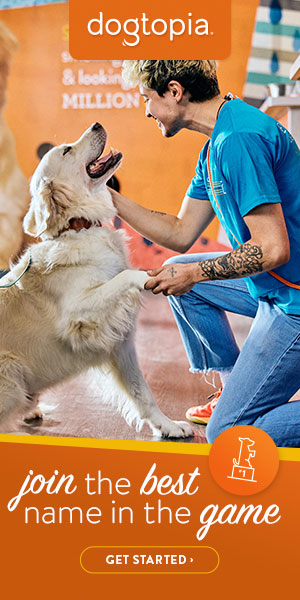Bark Busters Offers Safety Tips For 'take Your Dog To Work Day®' On June 26
World's Largest Dog Training Company Provides Common-Sense Pointers to Prepare for a Successful Workplace Experience
Englewood, Colo. — With the 11th Annual "Take Your Dog to Work Day" approaching (Friday, June 26), Bark Busters, the world's largest and most trusted dog training company, offers helpful tips for the 43+ million U.S. dog owners on how to prepare and manage their dogs for the workplace experience.
"We celebrate this day in support of its creator, Pet Sitters International, and its 2009 sponsors, PetFinders.com and Dog Fancy magazine," says Liam Crowe, CEO and master dog behavioral therapist of Bark Busters USA. "This event educates the public on the benefits of responsible pet ownership, raises the awareness of the importance of the human-animal bond, and supports the efforts of our local animal shelters, rescues and humane societies. At Bark Busters, every day is Take Your Dog to Work Day."
According to Crowe, the tips Bark Busters dog behavioral therapists provide their clients are not only based on good common sense, but also have been well tested during the company's 20 years of experience in training more than 500,000 dogs worldwide.
"When it comes to taking your dog to the office," said Crowe, "the key to a safe and successful experience is to prepare yourself and your dog in advance and to recognize potential problem situations before they can happen."
Crowe offers these pointers for dog owners who plan to bring their canine companions to work:
Items to Bring
- Recognize that this can be a stressful experience for your dog. It is a new environment, which in itself can cause apprehension. Bring along his dog pillow or blanket so he has something familiar to comfort him.
- Bring a leash to walk your dog from the car to the office. The leash will also help you control him in the office.
- Bring food or treats and a water bowl so your canine friend can stay well hydrated.
- Help your dog pass the time by bringing along dog toys, such as the Buster Cube® or KONG®.
Situations to Avoid
- Don't leave your dog alone with other dogs. If you must leave for a meeting, isolate your dog in a closed office or have a dog-familiar friend sit in until you return.
- Other dogs might not be as well behaved as your dog. Watch for any signs of dog aggressiveness, such as growling, staring, raised hackles, and stiff body posture. Diffuse potential conflict by removing your dog from the area.
- Don't try to force unfamiliar dogs to "become friends."
- Check with your supervisor to get an okay to leave work early if your dog can't handle the new environment. If he becomes too stressed, overexcited or inhibited, it's best to just take him home. Do not opt to leave him in your vehicle while you continue to work.
Stopping a Dog Fight
- Obviously, the best solution is to avoid bad situations altogether by closely monitoring dog interaction.
- If a dog scuffle occurs, don't lunge in and try to break it up by hand (you could get bitten accidently). Use your dog's blanket to throw over the heads of the fighting dogs. This will confuse the combatants long enough for you to defuse the situation.
Keys to Providing Good Leadership
According to Crowe, preparing for a safe and successful "Take Your Dog to Work Day" includes making sure that your dog accepts you as his leader.
- Dogs crave good leadership. If they don't get it from their owner, they'll take charge. That leads to bad behaviors, such as barking, jumping, aggression and pulling on the leash—each examples of the dog taking charge. Dogs will challenge for leadership in the home (and in the office), just as a wolf in the wild will do. The dog owner needs to win all challenges to demonstrate good leadership.
- Establish a clear leadership role with your dog before the office field trip. One way to do this is to ignore all requests from the dog, such as nudges to be petted or to play. Ignore him by breaking eye contact and turning away from him. When he has "given up" trying to get your attention, call him back to you to be petted or to play. When he responds to your requests and actions, versus you responding to his, he sees you as the leader.
- If your dog misbehaves, correct his behavior with a forceful, low-toned growl ("BAH!"), which is a form of communication that your dog can understand. As soon as he stops, offer pleasant, high-toned praise. He will understand his mistake and respect you as his leader.
- In the wild, the leader physically leads the pack. Establish your leadership by always leading your dog— up and down stairs, through doorways, and especially on walks. Remember, the leader always leads. This establishes you as "top dog" and gains your dog's respect.
"Most dog owners simply accept the bad behavior of their pets because they don't know how to change it," Crowe said. "Learning how to communicate effectively with your dog in a language he understands, through voice control and body language, is the key to providing the leadership needed to have authority over your dog at all times."
Bark Busters dog behavioral therapists, such as Liam Crowe, are renowned authorities in correcting and managing dog behavior. Bark Busters' natural training system can successfully train any dog, even a puppy, by leveraging the same communications methods—body language and voice control—that dogs follow as part of their instinctual pack mentality. Many of our clients require only one home visit from a Bark Busters-certified dog behavioral therapist if owners continue with follow-up exercises just 10 to15 minutes a day for several weeks. All training takes place right in the home where the problems generally occur. In every market where Bark Busters is established, a majority of veterinarians familiar with the technique recommend the company's services.
About Bark Busters:
Bark Busters, the world's largest, most trusted dog training company, started in Australia in 1989 and came to the United States in 2000. Since inception, over 500,000 dogs have been trained worldwide using its dog-friendly, natural methods. With approximately 250 franchised offices in 40 states and more than 400 offices in 10 countries, Bark Busters is continuing its mission to build a global network of dog behavioral therapists to enhance responsible dog ownership and reduce the possibility of maltreatment, abandonment and euthanasia of companion dogs. Bark Busters is the only international dog training company that offers guaranteed lifetime support. SPCA International selected Bark Busters dog behavioral training services as the "Best of the Best" in its category. No other training company or dog trainer has received such a distinction.
###
| ADVERTISE | SPONSORED CONTENT |
Franchise News
By Type
- Expansions & Growth
- Financial & Earnings Claims
- Mergers & Acquisitions
- Personnel Changes
- Conferences & Events
- Product Announcements
- Media Coverage
- Strategic Alliances
By Sector
| ADVERTISE | SPONSORED CONTENT |



 The franchise opportunities listed above are not related to or endorsed by Franchising.com or Franchise Update Media Group. We are not engaged in, supporting, or endorsing any specific franchise, business opportunity, company or individual. No statement in this site is to be construed as a recommendation. We encourage prospective franchise buyers to perform extensive due diligence when considering a franchise opportunity.
The franchise opportunities listed above are not related to or endorsed by Franchising.com or Franchise Update Media Group. We are not engaged in, supporting, or endorsing any specific franchise, business opportunity, company or individual. No statement in this site is to be construed as a recommendation. We encourage prospective franchise buyers to perform extensive due diligence when considering a franchise opportunity.